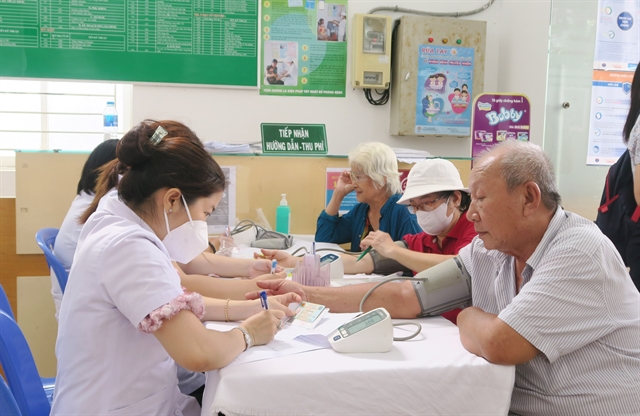August 14, 2025
HANOI – Experts warn that Việt Nam is on the brink of a severe ageing crisis unless comprehensive and timely measures are implemented. The country must build a society where older citizens can live healthily, safely and with dignity.
Việt Nam officially began its demographic ageing process in 2011. The proportion of people aged 60 and over increased from 8.7 per cent in 2009 to approximately 11.9 per cent in 2019. By late 2023 and early 2024, this figure had surged further to between 14.2 and 16 per cent.
Projections indicate Việt Nam will enter the ‘aged population’ phase between 2036 and 2038, becoming a super-aged society by 2050. This means it will take only 17 to 20 years to transition from an ageing to an aged population—one of the fastest such shifts worldwide.
In contrast, France took 115 years, Sweden 89 years, and the United States 69 years to make the same demographic leap.
Within Southeast Asia, Việt Nam is among the fastest-ageing countries, behind only Singapore and Thailand, and ahead of Indonesia, the Philippines and Cambodia.
According to former head of the Economic Research Department at Hà Nội’s Institute for Socio-Economic Development Studies Nguyễn Minh Phong, the rapid pace reflects Việt Nam’s unique history. A postwar baby boom combined with sharply declining birth rates has accelerated the population imbalance.
“To give a simple example: decades ago, families might have had 13 children. Those children are now elderly, while their offspring have one or two children or none at all. This leads to a replacement birth rate that is too low and a rapidly growing elderly population,” Phong told vov.vn.
He added that many international institutions predicted global population growth would soon turn negative, with most nations already facing low fertility rates and serious future challenges.
Ageing crisis looms
By 2045, Việt Nam’s elderly population is expected to reach 18 million—20 per cent of the total population—bringing risks such as rising numbers of elderly without family support, increased caregiving burdens (especially on women), labour shortages, and mounting pressure on healthcare and social security systems.

Elderly people receive free health check-ups at the Ward 10 Medical Centre in Ho Chi Minh City. PHOTO: VNA/VIET NAM NEWS
One of the most pressing consequences of population ageing is a shrinking workforce—a key engine of economic growth. As the proportion of older citizens rises sharply, pressures on social welfare systems increase accordingly.
Yet, the resources generated by the working-age population and economic growth are unlikely to cover the escalating costs of supporting those no longer able to work.
According to a report by Hoàng Tú Anh, an expert from the Centre for Creative Initiatives in Health and Population, Việt Nam currently has around 16.1 million elderly people, accounting for more than 16 per cent of the population. This surge presents major challenges for healthcare, social welfare, labour markets and community support services.
Healthcare is under particular strain, as older people face high rates of non-communicable diseases such as cardiovascular conditions, diabetes, osteoporosis and cancer, which require ongoing care.
Age-related illnesses including dementia and depression are common, alongside greater vulnerability to infectious diseases due to weakened immune systems.
“Long-term care services remain a major gap,” Tú Anh said. “Fewer than 1 per cent of elderly people can access quality public nursing homes, mostly those with special merits or difficult circumstances.
“Most care is still provided by families, especially women. With rising labour migration, many young people leave their hometowns, resulting in elderly people often caring for other elderly relatives. Việt Nam faces a severe shortage of professional caregivers.”
By 2045, the country will need hundreds of thousands of trained care workers. The World Health Organisation recommends about 5,000 care workers for every 100,000 people aged 65 and over.
Taking steps
Drawing on experience from the Netherlands, Tú Anh suggested Việt Nam could develop a flexible home care system, enabling older people to remain in their own homes with professional support, complemented by community and family caregivers.
She emphasised the need for a comprehensive policy framework with clear roles for all stakeholders, quality standards, diverse service options, training for geriatric professionals, and financial support for informal carers.
“Việt Nam must improve data systems, legal frameworks, healthcare structures, social security, and technology adoption,” she said.
“Equally important is changing societal attitudes to reduce stigma and build an inclusive society where the elderly live with dignity.”


